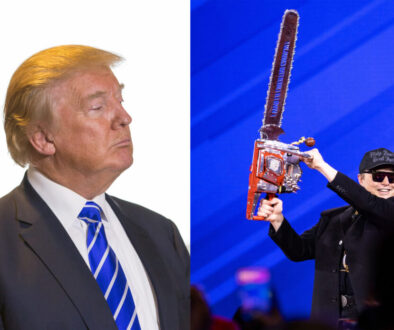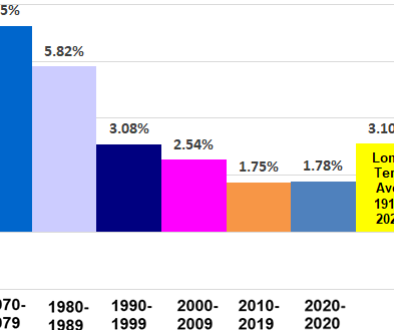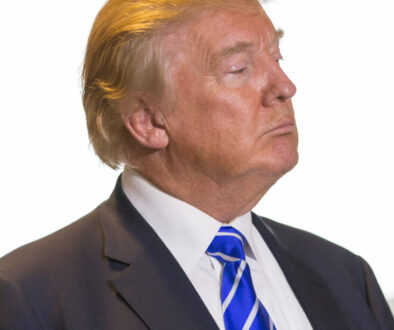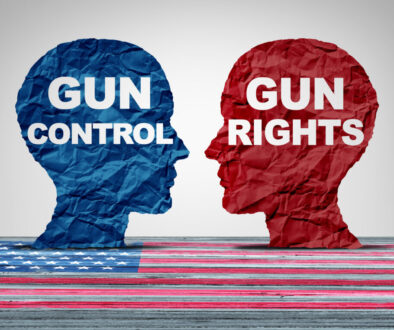Why Trump Took Classified Documents & Wouldn’t Return Them
Sept. 9, 2022 —
There is no doubt that upon leaving the White House, former President Trump illegally took documents that were not his. These were government-owned documents, many of which were classified. He did not ask for permission because he knew it was not allowed (can you imagine Donald Trump asking for permission for anything?). He illegally took and mishandled classified documents that he had no right to have in his possession. Trump knew that classified documents were closely tracked as to who has them. Knowing this—and that it was illegal—why would he take them in the first place? Since the search of his residence, he has come up with so many excuses that it’s hard to keep track of them. But if you look at how he has handled the return of the documents, his motives become obvious why he took them and why he returned them little by little over 18 months.
Trump Took Classified Documents That are Tracked Closely
For over a year, the Dept. of Justice (DOJ) told Trump and his lawyers that he had more classified documents than he initially said he had. To some, it might appear as though the DOJ didn’t know what he had, but they probably had a good idea. Every classified document is catalogued. Records are kept noting what the document is about, where it is, who has it, where it’s going and when it was removed from a secure location that is the “home” where that document is normally kept. Also recorded is when the document was returned. Plus, everything must be signed for. National Archives oversees all classified documents, and there are several secure locations where they are regularly stored. To name a few: the Defense Department and the individual branches, the CIA, the FBI, the National Security Agency, various intelligence agencies, the White House…and certainly several more. *

In an organized system, this would all have to be centrally controlled by a computer system run by one person, or, more than likely, a team. That is, of course, if it was organized correctly and run by responsible people. Consequently, the central “controller” of the classified documents that Trump has in his possession should be able to know exactly what he has (unless others who had access to them took the documents). Trump knew this, too. And if Trump, in keeping with his normal behavior, ran a disorganized administration (which is likely), then perhaps these classified documents were handled haphazardly in the White House, and no one really knew what was where. But it is likely that their origins can be all traced back to a starting point to find out who was responsible when each document was “checked out.” With enough investigation, The DOJ could figure out what he has.
Why Trump Took Government Documents
One thing we can say with absolute certainty: Trump took the government documents, both classified and not classified, to gain benefit in some way for himself. The opportunities to use the information are numerous. It could be that there is information in the documents that he can use in the future to learn about people he could be dealing with in his continued business dealings, or even in his future political battles in his lust for power. This could be either to have an advantage by knowing something other parties don’t think he knows, or personal information that he can use against people that would be embarrassing. Or it could be information that would give him an advantage to make a business deal with someone.
There could also be information that he is concerned about that he does not want to get out about himself—to either make him look bad in the public eye, or his personal life, or in a future business deal.
Why Trump Didn’t Want to Return them Right Away
By the time the warranted search of his residence took place, Trump might have already learned what he needed to learn from the classified documents. After all, he had them in his possession for over a year and a half. It is highly likely that they were reviewed, since many of the documents (classified or not) were found in his desk in his personal office, and many were found outside their folders. These are all indicators that he, or someone, had already gone through them. In fact, it is highly likely that he directed someone else, probably a lawyer (to protect his actions, in his mind, through attorney-client privilege), to go through them with instructions for what to look for. Knowing Trump’s penchant for not wanting to read daily briefings while he was President, it is even more than likely that he had someone else review them. But certainly, at the least, Trump oversaw the process. And it is more than likely, that someone took notes, maybe even made copies.
The idea that he has already reviewed the classified documents is even more likely if you look at the timeline of how they eventually were returned to the government. They were returned little by little over a year and a half. In May 2021, four months after he took the documents to Florida, the National Archives requested that Trump return all government-owned documents. That gave Trump four months to have already gone through them. But perhaps he wasn’t done reviewing them yet.
Trump Returns the First Bundle of Documents 11 Months After Taking Them
Seven months later, in December 2021, Trump and his team responded that they had 12 boxes, which Archives arranged to have returned to Washington. That was another seven months that Trump had to review them. He most likely had already gone through those 12 boxes in the 11 months since he took them, but especially during the seven months after the government asked for everything to be returned.
One month later, in January 2022, Archivists went to Mar-a-Lago and retrieved another 15 boxes. That gave Trump another month to review them. That probably means he was done reviewing those 15 boxes. It became increasingly obvious that he was returning them little by little.

All the boxes retrieved so far had classified documents in them, besides unclassified material that belongs to the government. Four months later, on May 11, 2022, the DOJ, knowing there were still missing documents in Trump’s possession, got a grand jury subpoena that gave Trump until May 24 to return all of them. Trump asked for an extension and got one for two more weeks—until June 7. But on June 2, Evan Corcoran, Trump’s lawyer, contacted the DOJ and told them to come to Mar-a-Lago and pick up the remaining documents asked for in the subpoena. On June 3, The FBI goes to Florida. Corcoran gives them a large envelope that he claims contains all the remaining classified documents. Trump was obviously done reviewing the documents in the envelope. Corcoran also states (and signs a document saying so) that no other classified documents exist at Mar-a-Lago. The subpoena limits what the FBI can search for, and they leave with the envelope. That gave Trump another five months to review them. He continued to return them little by little.
On Aug. 5, the DOJ, after reviewing the envelope’s contents, which included classified documents, and realizing that there are still more missing documents, got a warrant to search Mar-a-Lago, and the search was conducted on Aug. 8. The FBI seized 33 items, 13 of which are boxes with classified documents in them. Many items were found in Trump’s desk intermixed with personal items. That gave Trump another two weeks to review them.
Why else would Trump return the documents little by little unless he wasn’t done with getting what he needed from them yet?
Is Trump Getting Away With It?
The problem for Trump, although minor at this point, was that he didn’t know they would get a warrant and search his residence for the final documents—and he didn’t know when a search would happen. His lawyers might have warned him that it could happen, and Trump could have sped up his review of the documents that he still had in hopes of finishing it all up. He also might have thought that they wouldn’t dare search his residence with a warrant, and if they did, he felt he could create enough of a furor over a warrant that he could still get away with it. And that’s exactly what happened. Besides, he probably already searched most of the documents over the last 18 months and got what he wanted out of them. He might even have believed that he could use a search of his residence to his advantage. He might have welcomed it. With or without the search, he was in legal jeopardy for having classified documents anyway, so who cares? It could easily have been part of his plan all along. He probably thinks he can get away with it all.

There’s good reason to believe that he is getting away with it. After all, he took the documents, and slowly—over a period of a year and a half—returned them little by little, the last time being returned because of a search warrant. But he managed to continuously postpone returning them. Eighteen months is more than enough time to go over all the documents, except perhaps those taken by warrant (since the search was unexpected to some degree). Plus, the Republican party and many of its leaders criticized the DOJ and the FBI immediately after the search.
Trump successfully took the documents—certainly knowing that they were classified—reviewed them and got what he wanted. He will continue to make a big enough stink over the warranted search that he believes he will get away with it, even if it’s a minor punishment and/or fine.
The idea that he took them by mistake, or he thought they were his, or he didn’t review them—is laughable. He had a plan all along and he pulled it off. He weighed the risks, took the documents, reviewed them, and gave them back when he was done with them—at his pace. So far, so good.
How Taking the Documents Could Help Trump
Trump talks about running for President in 2024, but I doubt he will run. He will pretend he will, even if he announces his candidacy, but he will pull out at some point, because he won’t take the chance of being a loser again. He might even use an indictment and conviction for mishandling of classified documents as an excuse—claiming it is all a political witch hunt. That’s because the chances of him spending jail time is almost non-existent. He will then have not only gotten away with it but used it to his advantage to further his political power—outside of government, which is what his real goal is. After all, he has tens of millions of Fifth-Avenue supporters who will follow him wherever he wants to go. They will always believe that he won the election and that he is a victim of persecution.
Questions remain about who reviewed the classified documents: Did they take notes and make copies, and where are those notes? ** The most likely place is in a lawyer’s files. The DOJ needs look for them. The country needs find them.
******
* For more detailed information on how classified documents are handled, go to this link to download a PDF of the Classified Matter Protection and Control Handbook put out by the Dept. of Energy. Start on page 55 of the PDF (skipping the marking information).
For a shorter, and less informative, description of the handling of classified documents from the National Archives, go here.
** Update: In January 2023, more classified documents were found in Trump’s possession, including a laptop where notes had been made from the classified document. This article suggests that all the classified documents were reviewed and notes made. So far, investigator’s have only found this laptop. There are probably dozens, if not hundreds, of notes made, both digitally and on paper, that were a result of Trump and his team’s reviewing of all the documents.



